A Switched Quasi-Z-Source Inverter with Continuous Input Currents
Abstract
:1. Introduction
2. Operation Principle of the Proposed S-qZSI
3. Comparison with Prior-Art ZSI Topologies
4. Simulation and Experimental Results
4.1. Simulation Results
4.2. Experimental Results
5. Conclusions
Author Contributions
Funding
Conflicts of Interest
References
- Peng, F.Z. Z-source inverter. IEEE Trans. Ind. Appl. 2003, 39, 504–510. [Google Scholar] [CrossRef]
- Yu, Y.; Zhang, Q.; Liang, B.; Liu, X.; Cui, S. Analysis of a single-phase Z-source inverter for battery discharging in vehicle to grid applications. Energies 2011, 4, 2224–2235. [Google Scholar] [CrossRef] [Green Version]
- Anderson, J.; Peng, F.Z. Four quasi-Z-Source inverters. In Proceedings of the 2008 IEEE Power Electronics Specialists Conference, Rhodes, Greece, 15–19 June 2008; pp. 2743–2749. [Google Scholar]
- Yuan, J.; Mostaan, A.; Yang, Y.; Siwakoti, Y.P.; Blaabjerg, F. A Modified Y-Source DC/DC Converter with High Voltage-Gains and Low Switch Stresses. IEEE Trans. Power Electron. 2020. [Google Scholar] [CrossRef]
- Mostaan, A.; Yuan, J.; Siwakoti, Y.P.; Esmaeili, S.; Blaabjerg, F. A Trans-Inverse Coupled-Inductor Semi-SEPIC DC/DC Converter With Full Control Range. IEEE Trans. Power Electron. 2019, 34, 10398–10402. [Google Scholar] [CrossRef]
- Serhii, S.; Husev, O.; Vinnikov, D.; Roncero-Clemente, C.; Pimentel, S.; Santasheva, E. Experimental Comparison of Two-Level Full-SiC and Three-Level Si–SiC Quasi-Z-Source Inverters for PV Applications. Energies 2019, 12, 2509. [Google Scholar]
- Honarmand, S.; Rajaei, A.; Shahparasti, M.; Luna, A.; Pouresmaeil, E. A Modified Partial Power structure for Quasi Z-Source Converter to Improve Voltage Gain and Power Rating. Energies 2019, 12, 2139. [Google Scholar] [CrossRef] [Green Version]
- Zhu, M.; Yu, K.; Luo, F.L. Switched Inductor Z-Source Inverter. IEEE Trans. Power Electron. 2010, 25, 2150–2158. [Google Scholar]
- Nguyen, M.; Lim, Y.; Cho, G. Switched-Inductor Quasi-Z-Source Inverter. IEEE Trans. Power Electron. 2011, 26, 3183–3191. [Google Scholar] [CrossRef]
- Li, D.; Loh, P.C.; Zhu, M.; Gao, F.; Blaabjerg, F. Generalized Multicell Switched-Inductor and Switched-Capacitor Z-Source Inverters. IEEE Trans. Power Electron. 2013, 28, 837–848. [Google Scholar] [CrossRef]
- Rostami, S.; Abbasi, V.; Kerekes, T. Switched capacitor based Z-source DC–DC converter. IET Power Electron. 2019, 12, 3582–3589. [Google Scholar] [CrossRef]
- Rostami, S.; Abbasi, V.; Blaabjerg, F. Implementation of a common grounded Z-source DC–DC converter with improved operation factors. IET Power Electron. 2019, 12, 2245–2255. [Google Scholar] [CrossRef]
- Ravindranath, A.; Mishra, S.K.; Joshi, A. Analysis and PWM Control of Switched Boost Inverter. IEEE Trans. Ind. Electron. 2013, 60, 5593–5602. [Google Scholar] [CrossRef]
- Nguyen, M.; Le, T.; Park, S.; Lim, Y. A Class of Quasi-Switched Boost Inverters. IEEE Trans. Ind. Electron. 2015, 62, 1526–1536. [Google Scholar] [CrossRef]
- Ho, A.; Chun, T.; Kim, H. Extended Boost Active-Switched-Capacitor/Switched-Inductor Quasi-Z-Source Inverters. IEEE Trans. Power Electron. 2015, 30, 5681–5690. [Google Scholar] [CrossRef]
- Nozadian, M.H.B.; Babaei, E.; Hosseini, S.H.; Asl, E.S. Steady-State Analysis and Design Considerations of High Voltage Gain Switched Z-Source Inverter with Continuous Input Current. IEEE Trans. Ind. Electron. 2017, 64, 5342–5350. [Google Scholar] [CrossRef]
- Ahmad, A.; Bussa, V.K.; Singh, R.K.; Mahanty, R. Switched-Boost-Modified Z-Source Inverter Topologies With Improved Voltage Gain Capability. IEEE J. Emerg. Sel. Top. Power Electron. 2018, 6, 2227–2244. [Google Scholar] [CrossRef]
- Liu, Y.; Abu-Rub, H.; Ge, B.; Blaabjerg, F.; Ellabban, O.; Loh, P.C. Impedance Source Power Electronic Converters; John Wiley & Sons: Hoboken, NJ, USA, 2016. [Google Scholar]
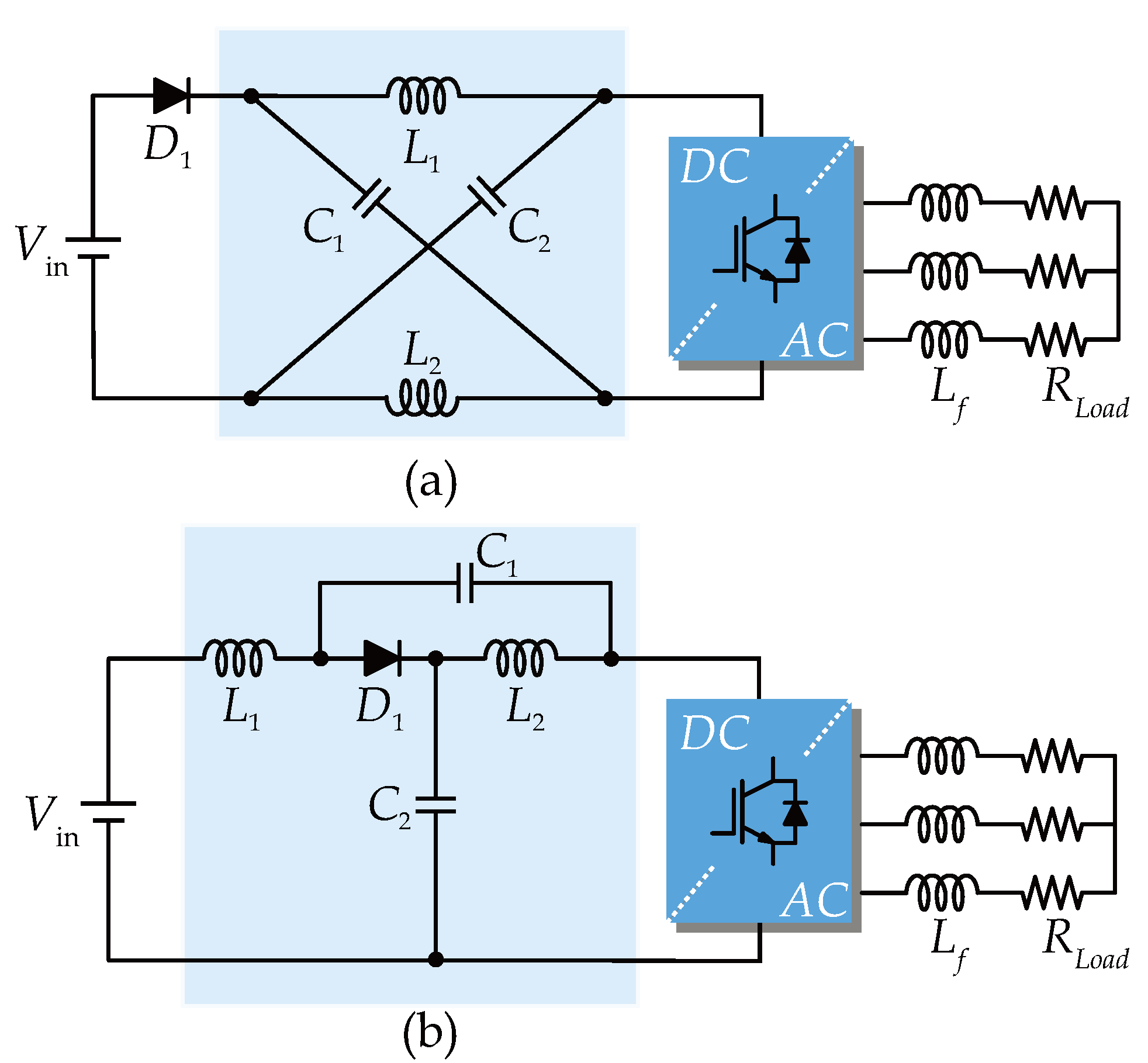
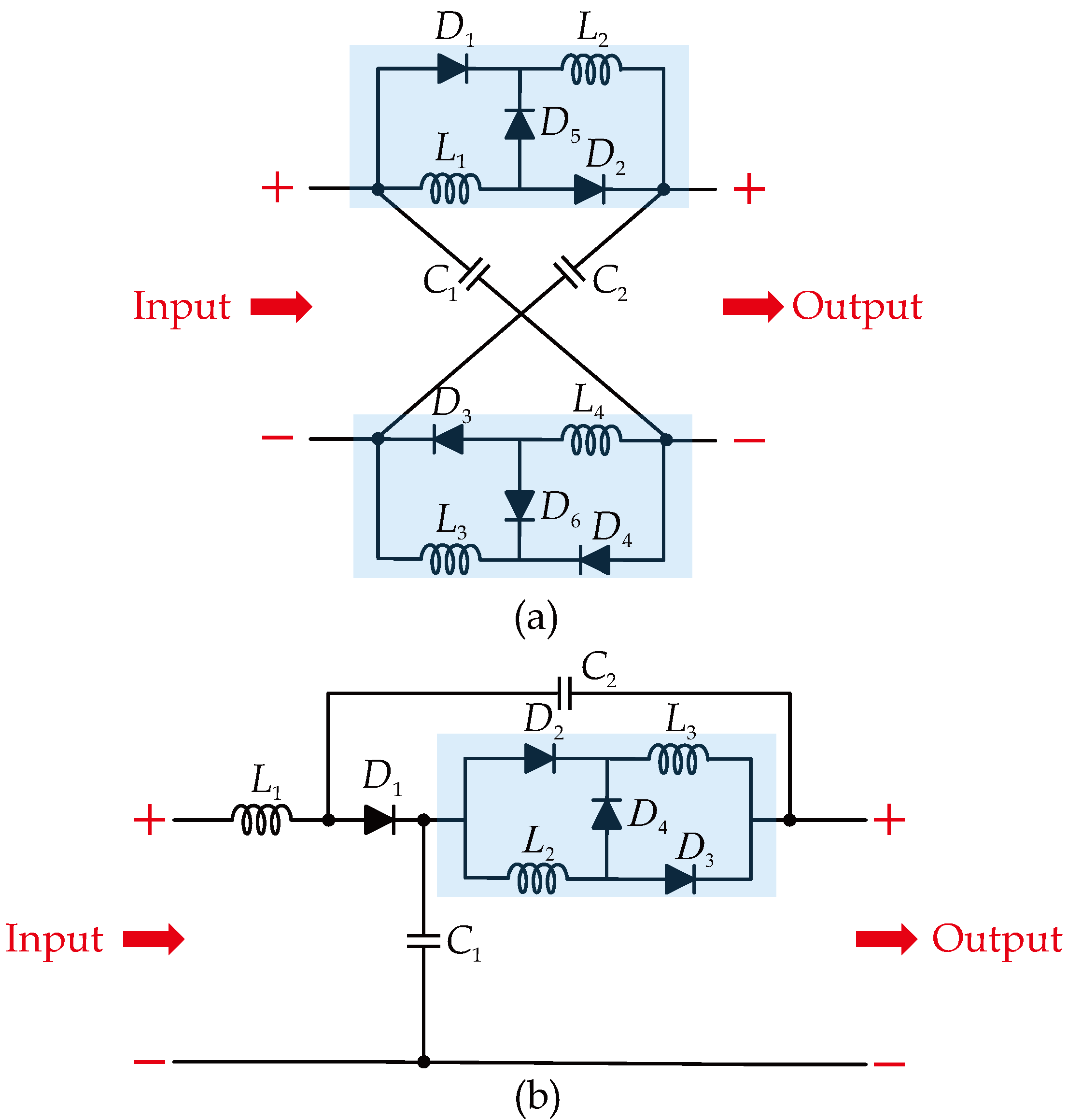
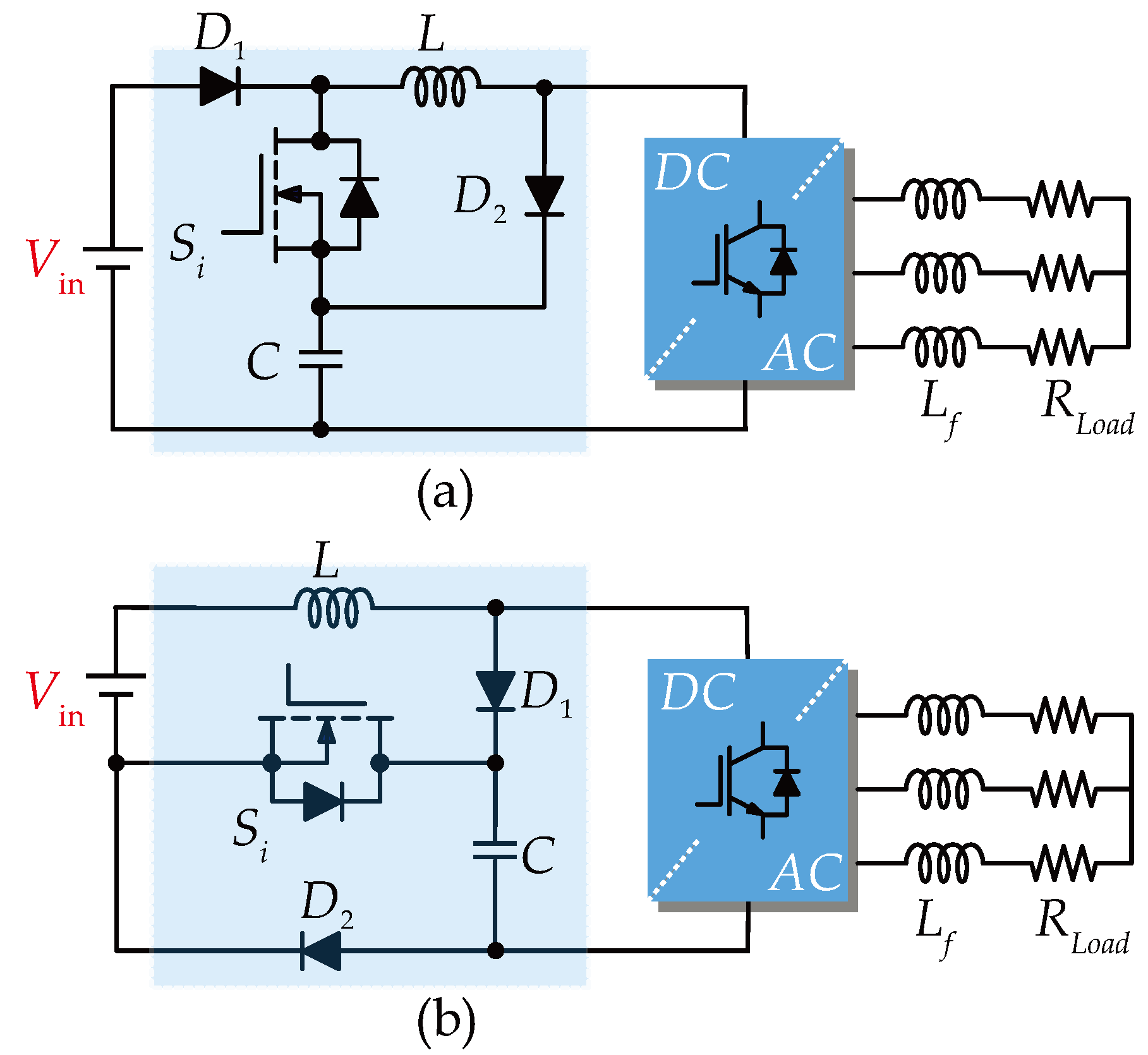
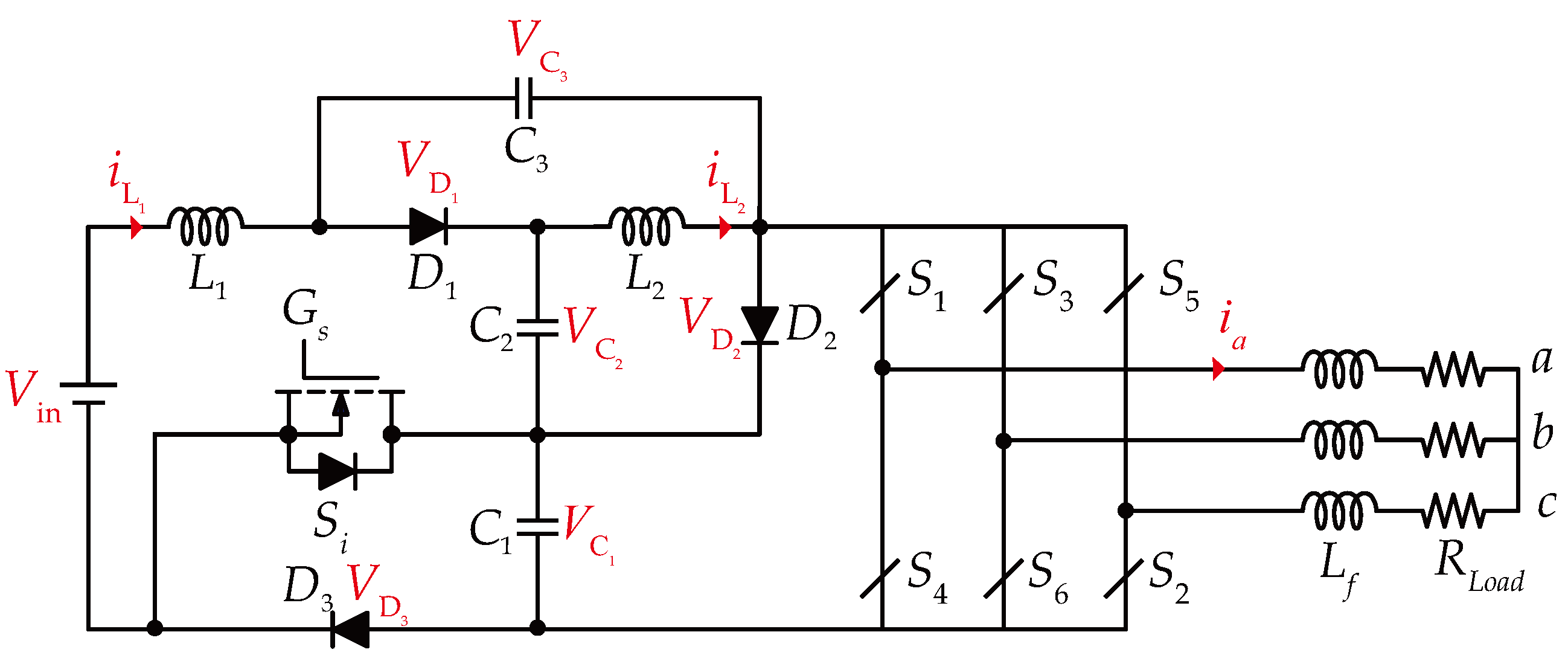
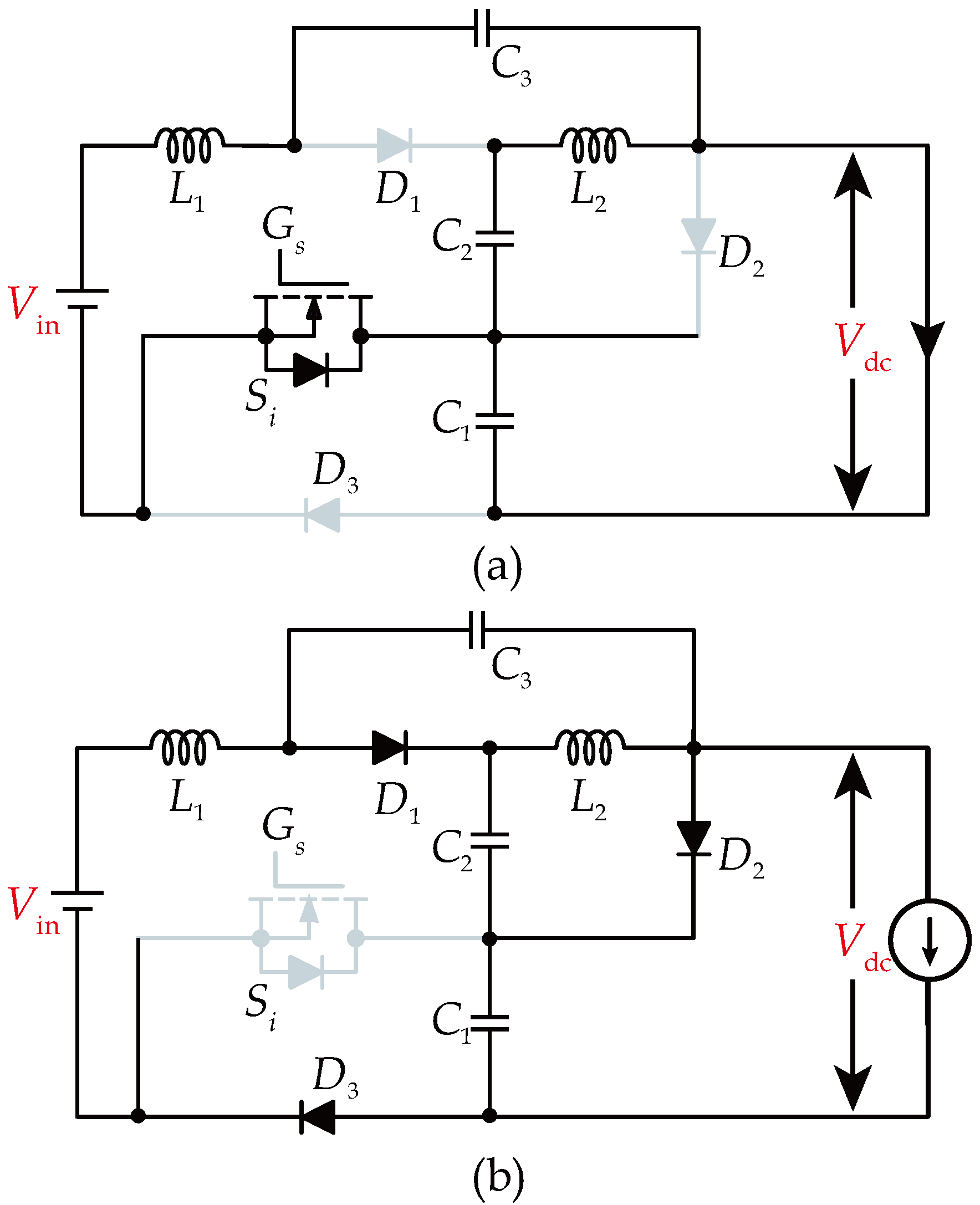
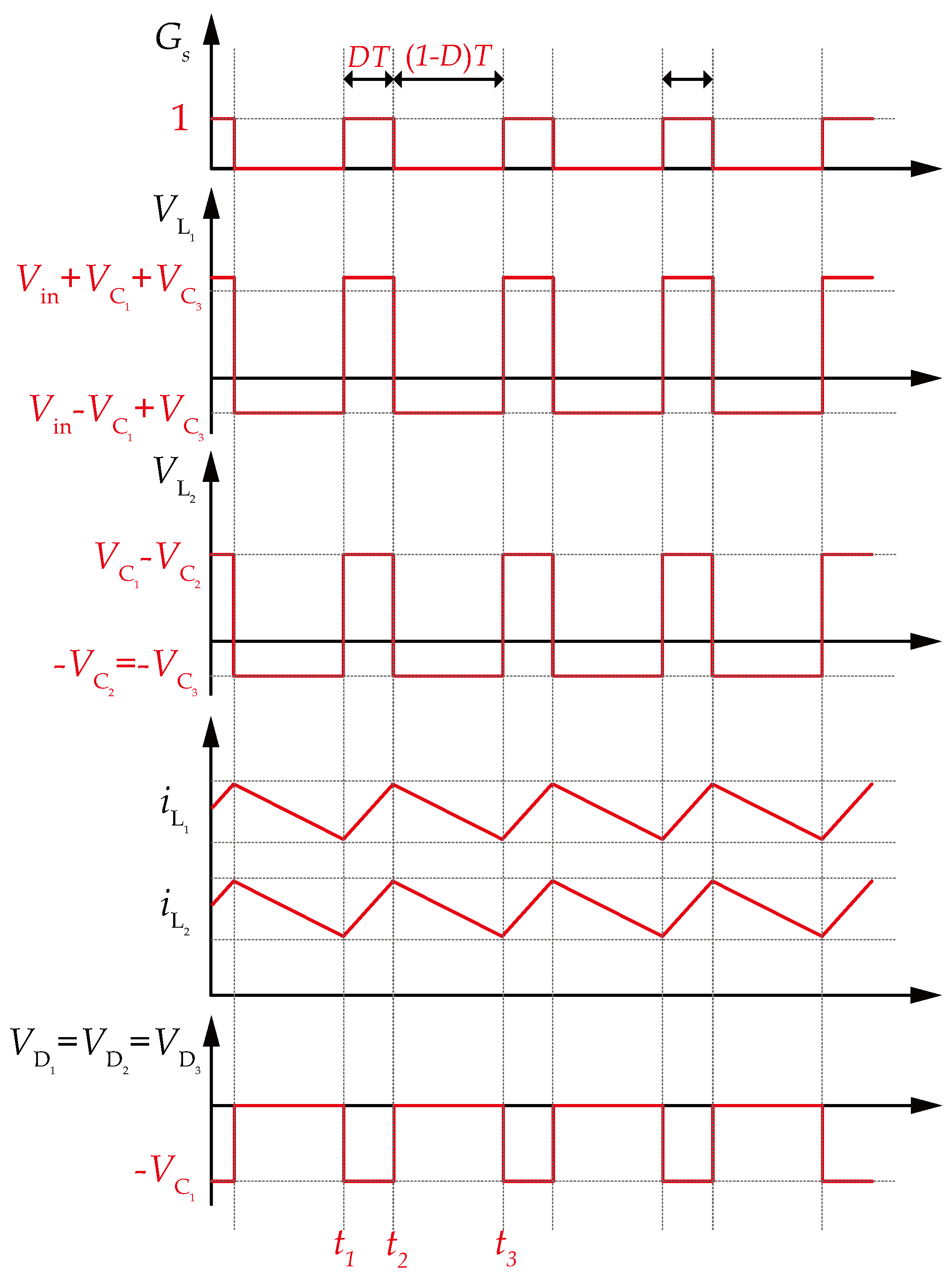
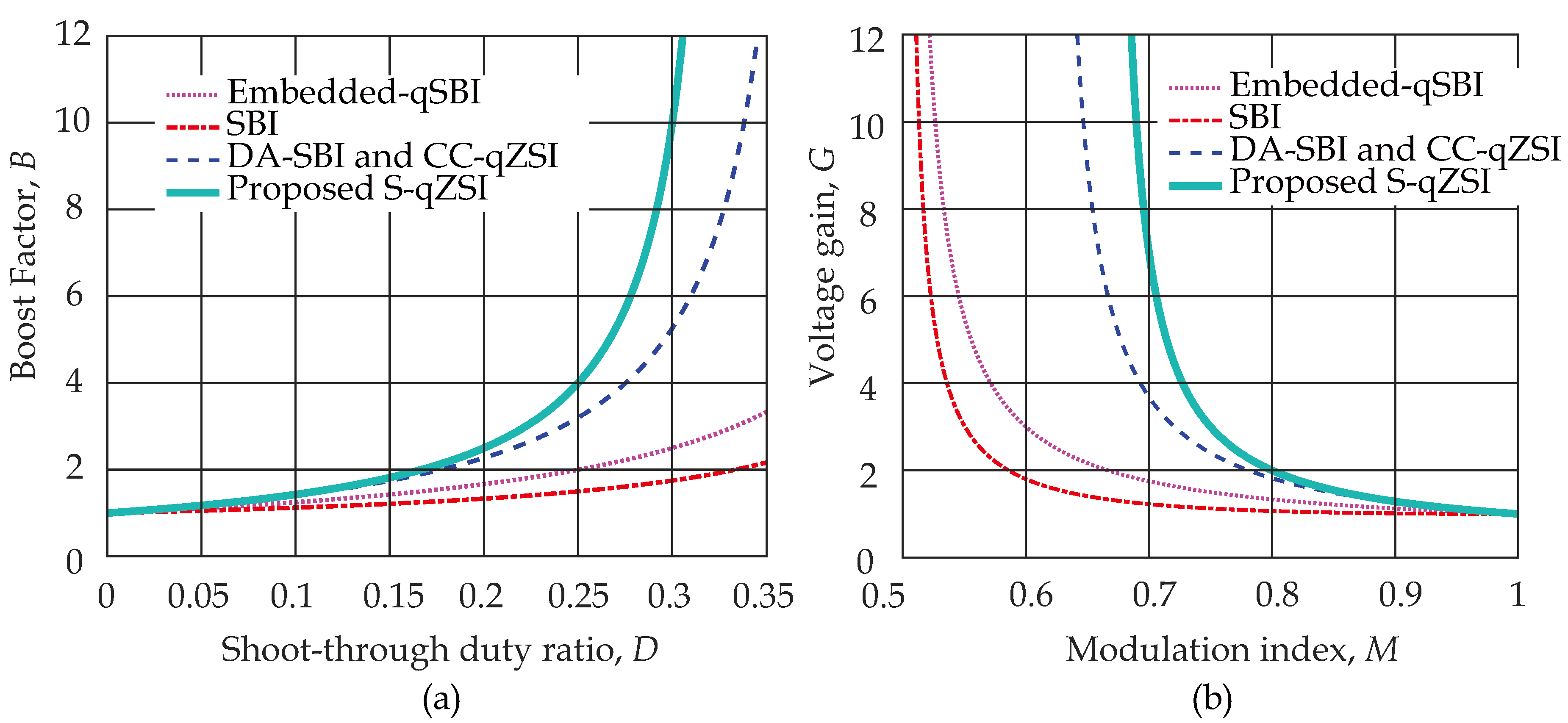
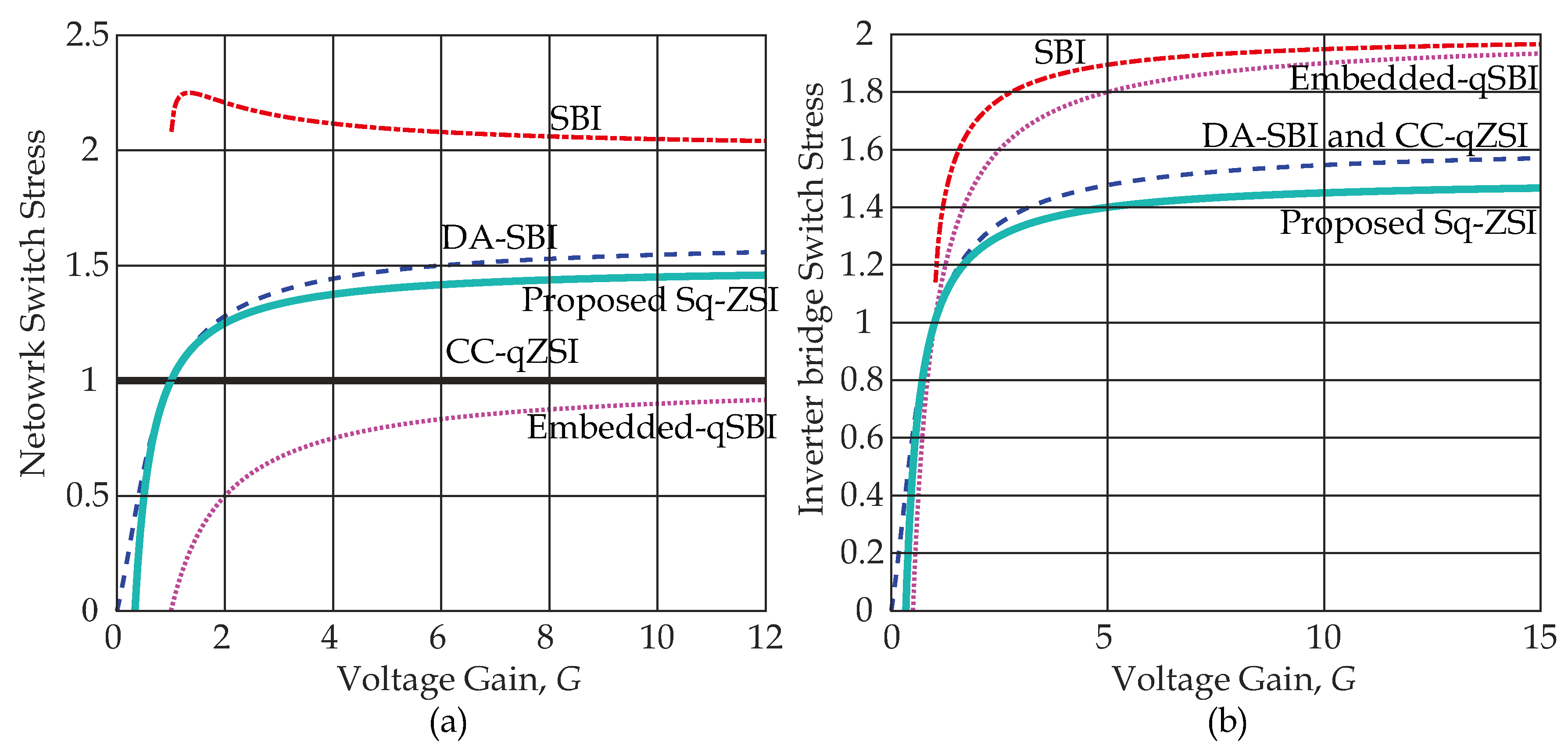
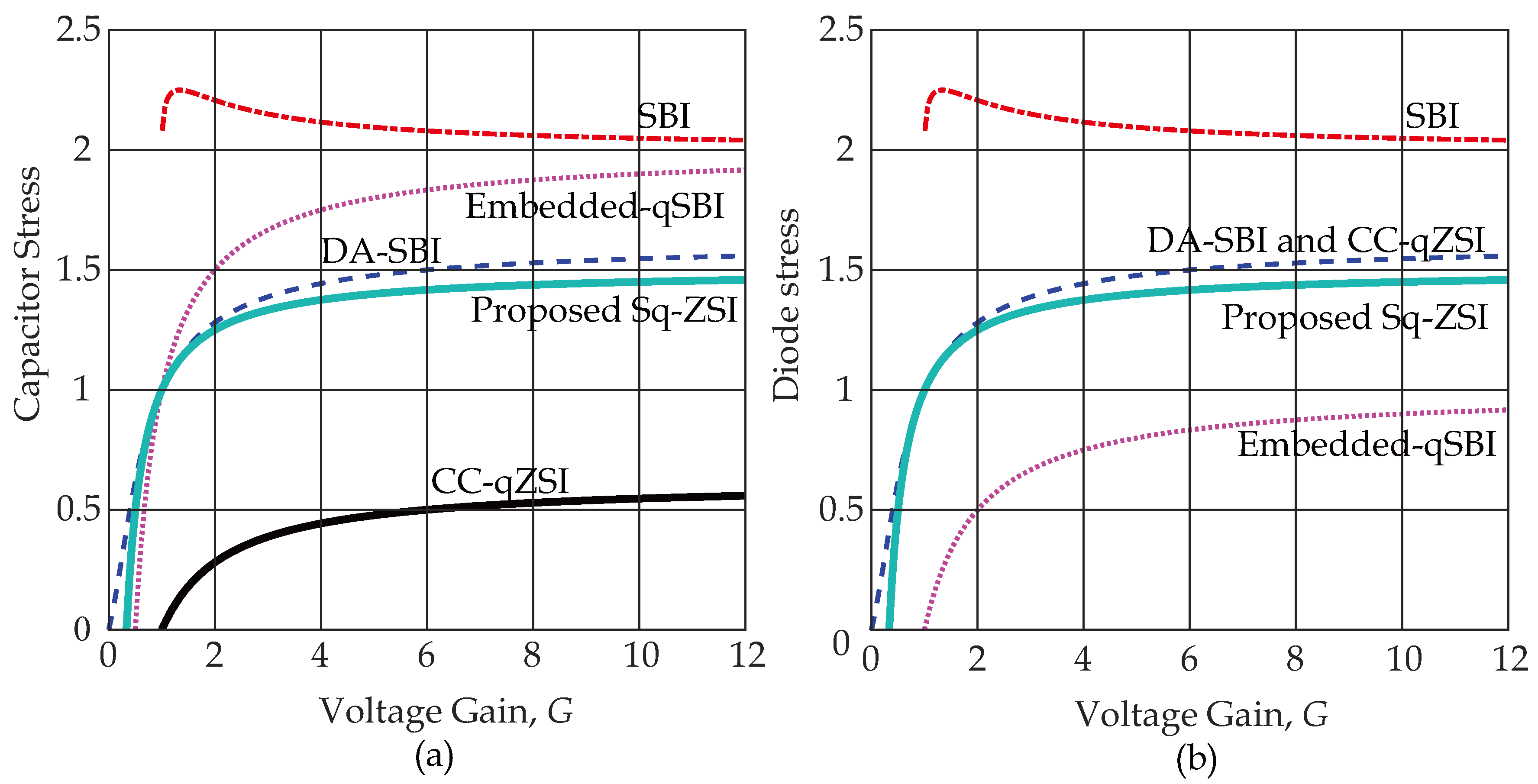
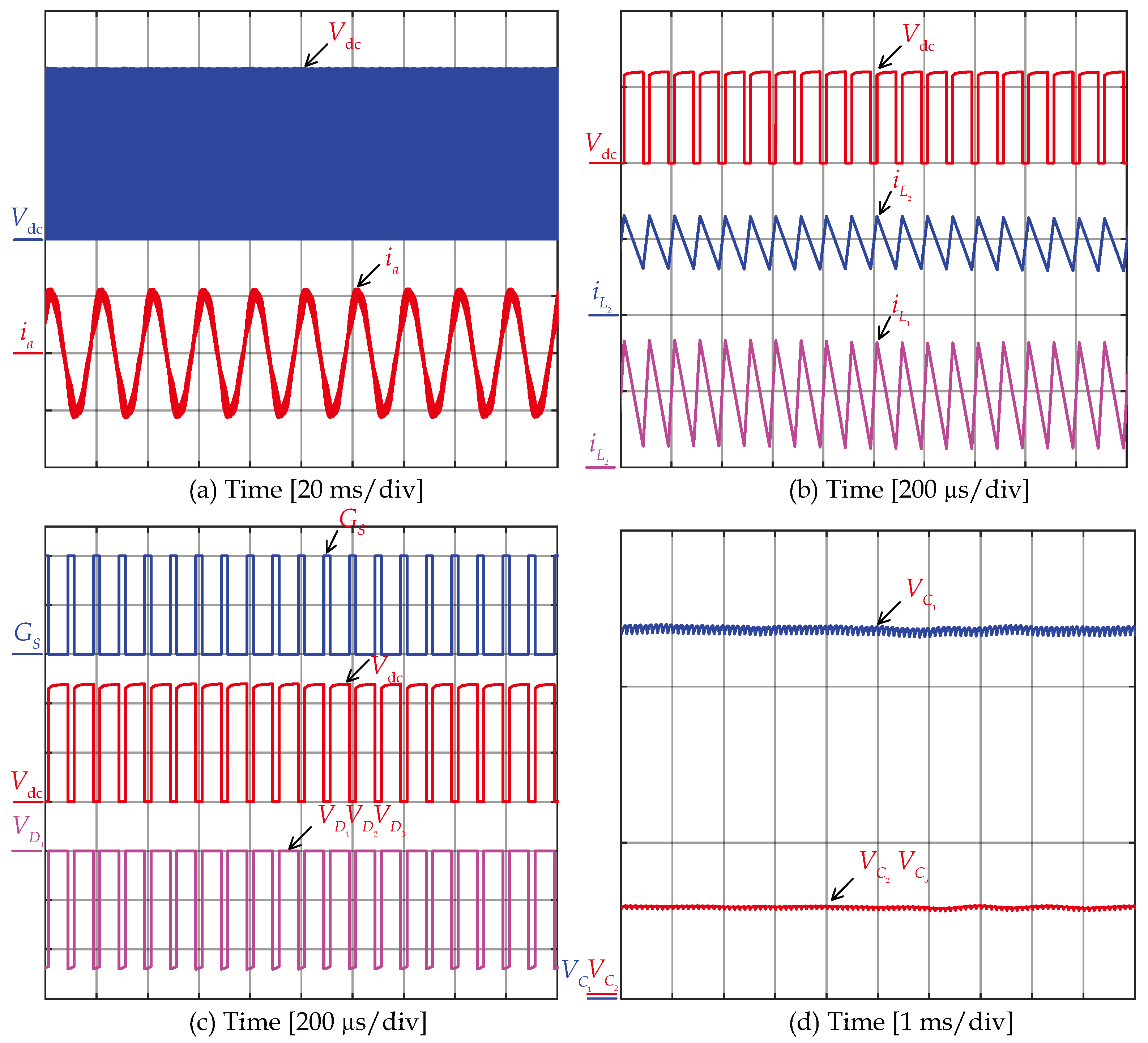
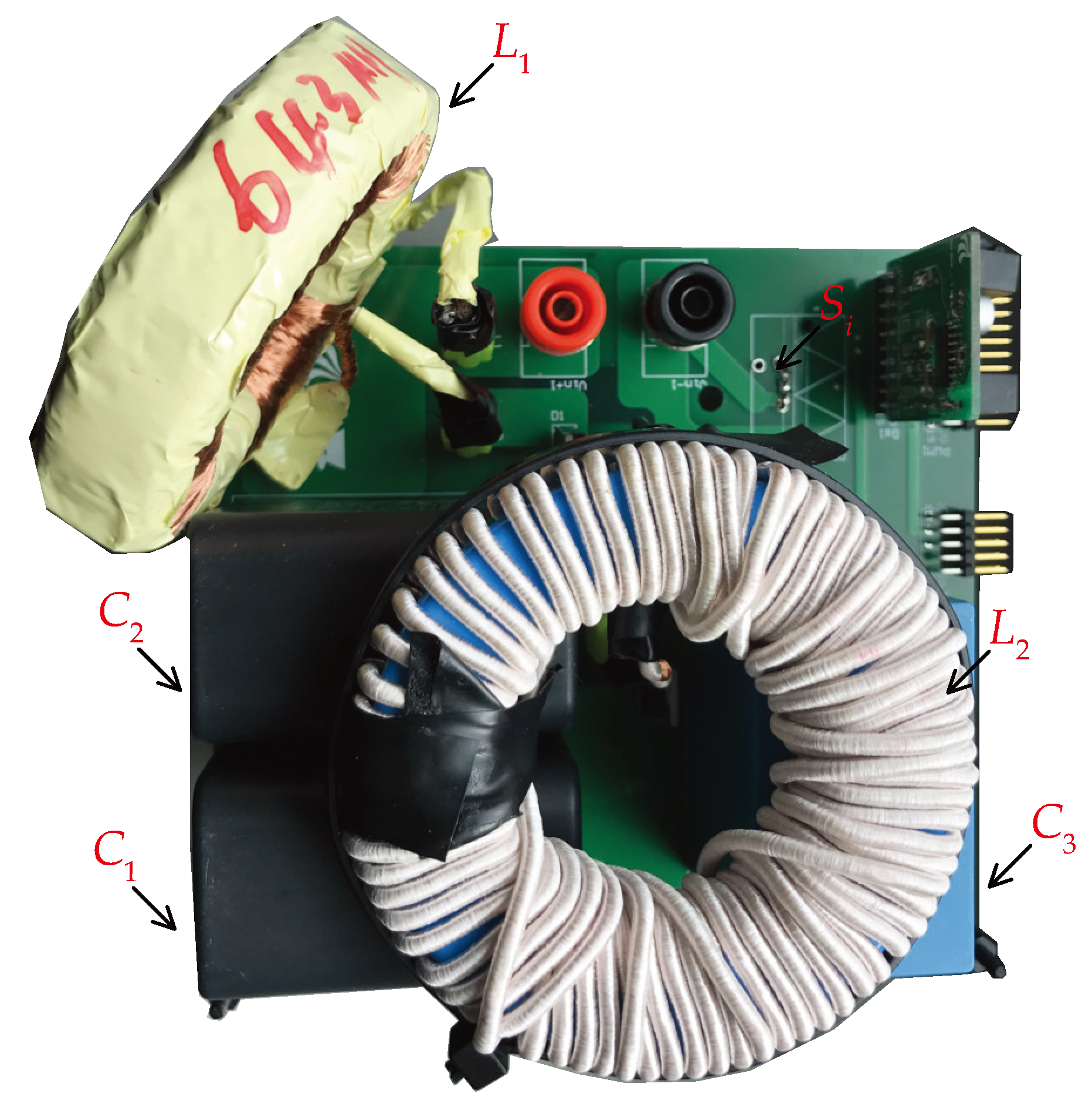
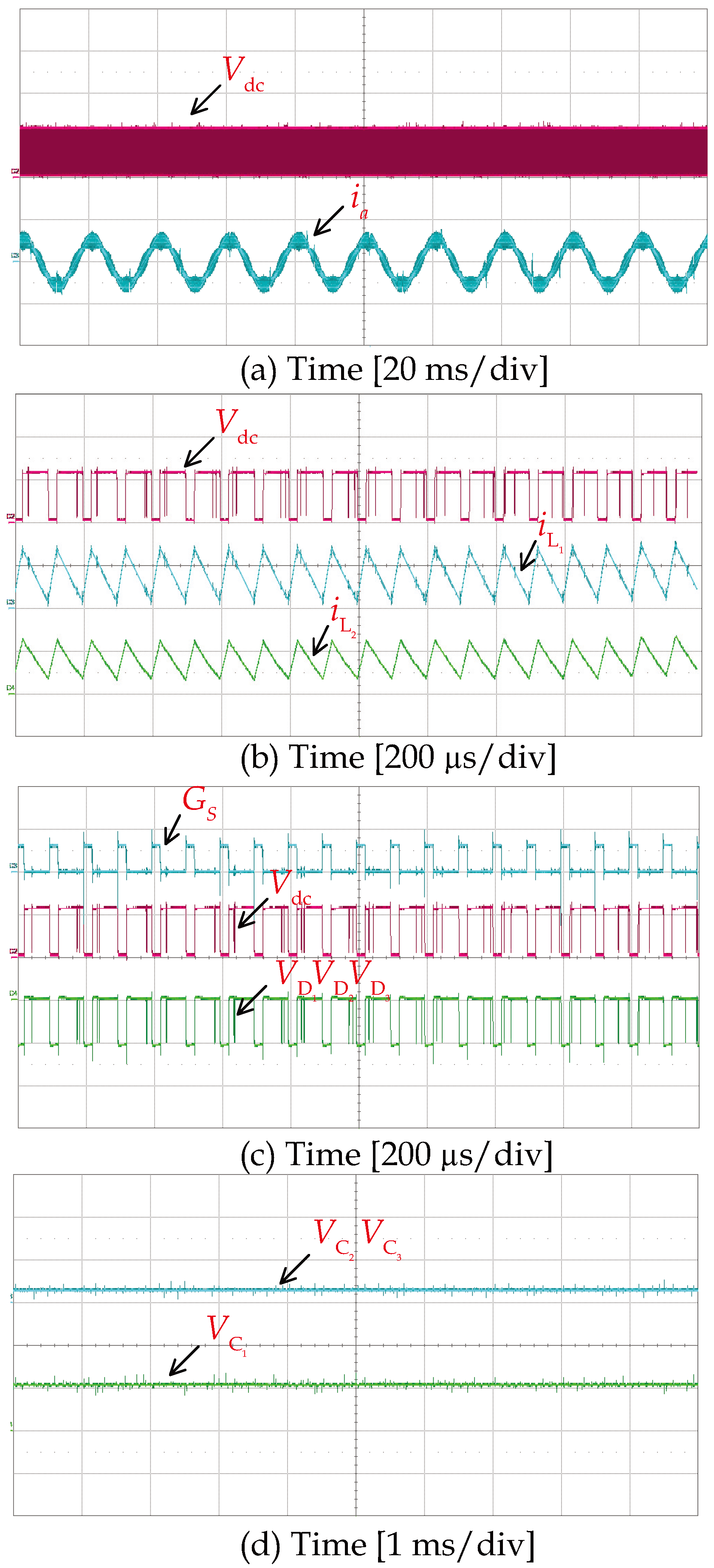
| Components | Voltage | |
|---|---|---|
| Shoot-Through Mode | Non-Shoot-Through Mode | |
| Inductor | ||
| Inductor | ||
| Switch S | 0 | |
| Diode | 0 | |
| Diode | 0 | |
| Diode | 0 | |
| peak DC-link | 0 | |
| SBI [13] | Embedded-qSBI [14] | DA-SBI [16] | CC-qZSI [17] | Proposed S-qZSI | ||
|---|---|---|---|---|---|---|
| Component count | Inductors | 1 | 1 | 2 | 2 | 2 |
| capacitors | 1 | 1 | 2 | 2 | 3 | |
| switches | 1 | 1 | 1 | 1 | 1 | |
| diodes | 2 | 2 | 4 | 2 | 3 |
| SBI [13] | Embedded-qSBI [14] | DA-SBI [16] | CC-qZSI [17] | Proposed S-qZSI | |
|---|---|---|---|---|---|
| Boost factor B | |||||
| Voltage gain G | |||||
| 1 | |||||
| / | / | 1 | |||
| / | / | / | / | ||
| 1 | |||||
| / | / | 1 | / | ||
| / | / | / | / |
| Parameter | Symbol | Value |
|---|---|---|
| Modulation index | M | 0.83 |
| Duty cycle | D | 0.25 |
| DC input voltage | V | |
| S-qZSI inductance | H | |
| S-qZSI capacitor | F | |
| Load inductance | mH | |
| Load resistance | ||
| Switching frequency | 5 kHz |
© 2020 by the authors. Licensee MDPI, Basel, Switzerland. This article is an open access article distributed under the terms and conditions of the Creative Commons Attribution (CC BY) license (http://creativecommons.org/licenses/by/4.0/).
Share and Cite
Yuan, J.; Yang, Y.; Blaabjerg, F. A Switched Quasi-Z-Source Inverter with Continuous Input Currents. Energies 2020, 13, 1390. https://doi.org/10.3390/en13061390
Yuan J, Yang Y, Blaabjerg F. A Switched Quasi-Z-Source Inverter with Continuous Input Currents. Energies. 2020; 13(6):1390. https://doi.org/10.3390/en13061390
Chicago/Turabian StyleYuan, Jing, Yongheng Yang, and Frede Blaabjerg. 2020. "A Switched Quasi-Z-Source Inverter with Continuous Input Currents" Energies 13, no. 6: 1390. https://doi.org/10.3390/en13061390
APA StyleYuan, J., Yang, Y., & Blaabjerg, F. (2020). A Switched Quasi-Z-Source Inverter with Continuous Input Currents. Energies, 13(6), 1390. https://doi.org/10.3390/en13061390








